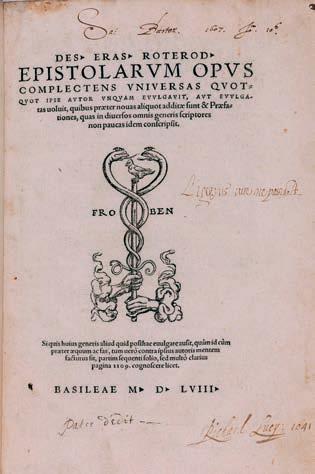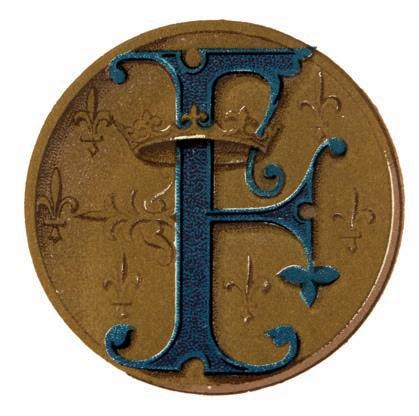
2 minute read
F Fine Printing





Fine Printing
The College is fortunate to be the custodian of books produced by some of the greatest publishing houses in history.
Chief among them is that of Aldus Manutius of Venice, pre-eminent printer of the Renaissance, the inventor of the ‘New Roman’ typeface, italic type and the semicolon. The College has three works from the Aldine Press dating from the early 1500s, each bearing the famous device of the dolphin and anchor, symbol of Aldus’s speed and accuracy. One of Aldus’s ablest rivals was Johann Froben of Basel, represented in the collection by folio editions of the works of Josephus (1544) and the letters of Erasmus (1558). Europe’s greatest publishing house of the late 1500s and early 1600s was that of Christophe Plantin and Balthasar Moretus at The Golden Compasses in Antwerp, its quality exemplified by the sumptuous edition of Seneca’s works published in 1615. Many of the values espoused by these early masters were upheld by Marlborough’s own William Morris, and we are fortunate to have several works from the Kelmscott Press. The Arts and Crafts aesthetic championed by Morris inspired a host of small, private presses, and the College acquired fine examples from 20th-century artisan printers like the Nonesuch Press, Cuala Press, Golden Head Press, Whittington Press and Westminster Press, often gifted by the publishers.
For half a century between 1934 and 1984, Marlborough published its own books under the aegis of The Marlborough College Press. It was the initiative of Brian Hone (1907–78), Marlborough’s first teacher of English, who, though himself a Cambridge cricketing Blue, recognised that pupils averse to sport needed something to occupy them. With funds from the Master of the time, George Turner, Hone set up the press, having first taken a crash course in hand printing with The Shakespeare Head Press in the winter of 1933–34. Oxford University Press gifted the College an Albion printing press from 1839, along with stocks of Caslon type; Hone later acquired further presses, including one that had belonged to William Morris. Indeed, Hone travelled to Kelmscott Manor in 1935 to meet with May Morris, William and Janey’s daughter, then aged 73. With a team of dedicated pupils, Hone oversaw a series of handsomely printed books, and his Press in time published limited editions of the works of Ronsard, Sassoon (150 copies signed by the poet), William Golding, A. E. Housman, Robert Graves and many others. When Hone left in 1939 to become a headmaster in his native Australia, the Press fell under the direction of Edward Walters (1899–1977), today remembered as a highly skilled wood engraver in the great English tradition. Among the works issued during his tenure was Unity in Strength and Other Fables of Aesop, published in 1942 with woodcuts by Walters. After the Second World War, the Press continued to publish literary titles, but also took on the job of printing Orders of Service, invitations, cricket scorecards, prize lists, annual Christmas cards and play programmes. Its finest post-War work was The Marlborough Litany printed in 1949 in three colours and with exceptionally dignified typography.











